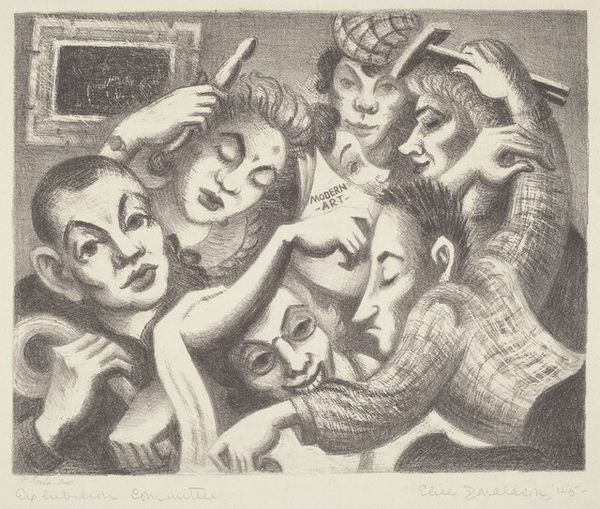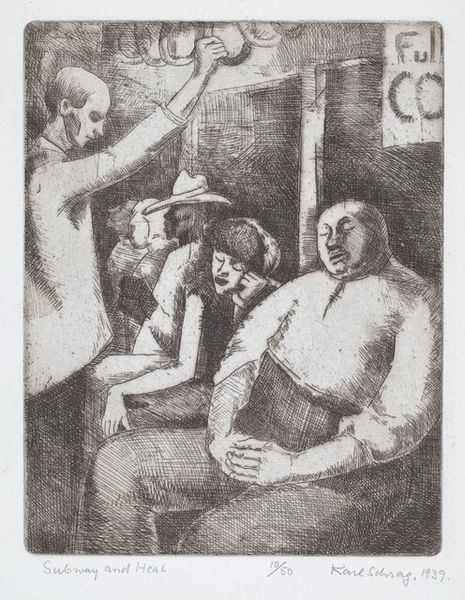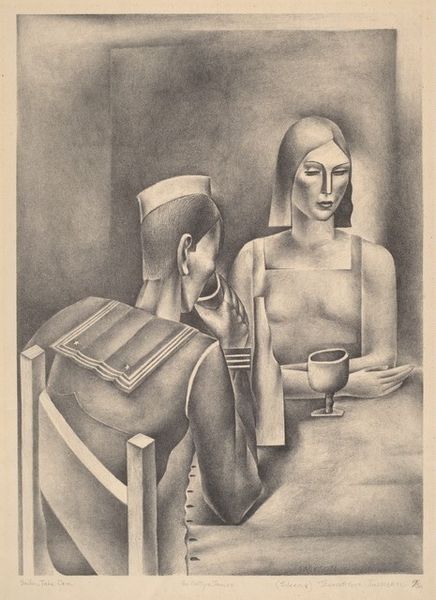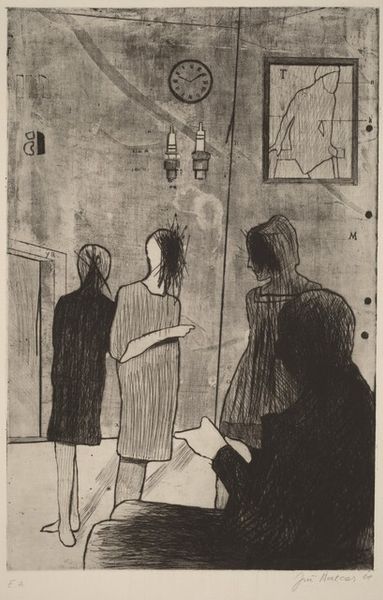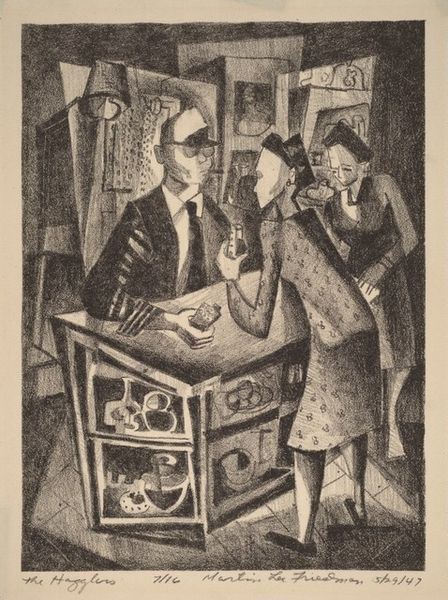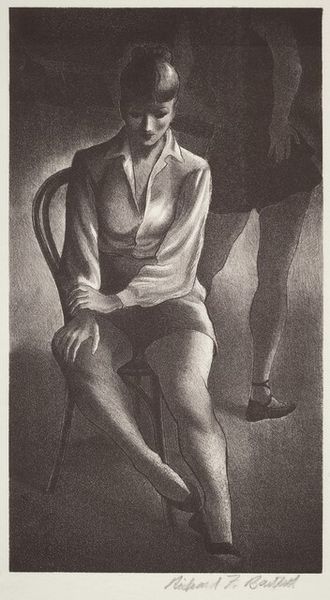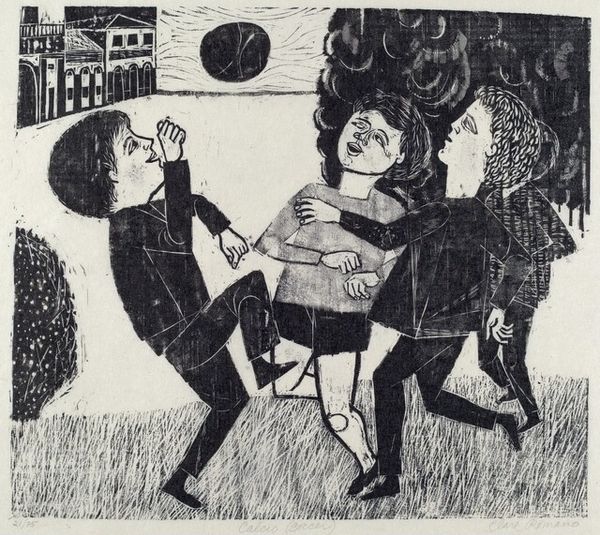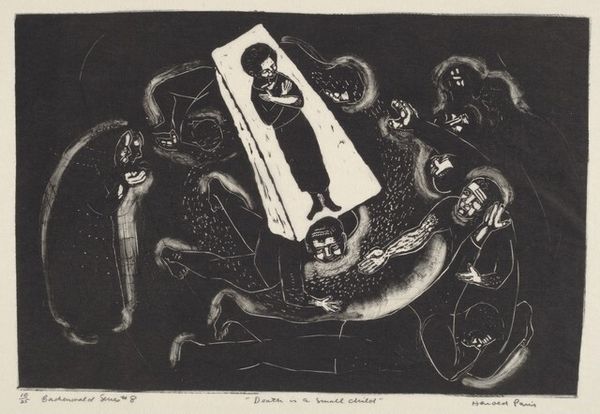
drawing, print, graphite
#
portrait
#
drawing
# print
#
charcoal drawing
#
social-realism
#
graphite
#
cityscape
#
portrait drawing
#
graphite
#
modernism
#
realism
Dimensions: Image: 202 x 291 mm Sheet: 249 x 349 mm
Copyright: National Gallery of Art: CC0 1.0
Curator: Immediately, I’m struck by the starkness. A heavy darkness, almost oppressive. Editor: And appropriately so, considering we're looking at Eugene Karlin's lithograph "Night Shift" from 1941, rendered in graphite and charcoal. Three figures, presumably laborers, dominate the foreground. Curator: The textures are really remarkable; the artist coaxes so much from these simple materials. Notice the rough clothing contrasting with the smoother skin of the central figure. There’s an almost tactile quality to the print. One can imagine the grit under the worker’s fingernails. The stark contrast highlights the strenuous conditions faced by these workers. Editor: It’s a powerful example of Social Realism. Produced on the eve of World War II, Karlin’s print speaks to the role of the working class in wartime production. It places them squarely within the cityscape, a web of industry, a social commentary for the time. Curator: Absolutely, and that cityscape looms large. See how the factory smokestacks become almost character-like elements? They stand in the distance, exuding an air of bleak monumentality in contrast to the figures at the fore, hunched and seemingly world-weary. The rendering emphasizes their role in the production process. Editor: Precisely. Karlin situates them in the broader societal machinery. Prints like these were vital to circulating socio-political messages to a wider audience in a time long before our digital image culture. Their affordability and reproducibility allowed them to function as visual manifestos, finding their way into union halls and workers' homes. Curator: Looking at the printmaking process adds another layer. It shows the intent to multiply and disseminate these portraits of laborers en masse. The artist acts almost like a foreman here, ensuring each "copy" does the grueling, necessary job of making the plight of labor known. Editor: Indeed, we witness a portrait not just of labor but of the social role of art, and how these combined processes impacted communities beyond the gallery. It invites questions about the historical perception and value of the working class, a subject ripe for ongoing reconsideration today. Curator: I will consider this artwork through a new lens moving forward, definitely. Editor: I couldn't agree more. It has really offered much insight into a key time and place in American history.
Comments
No comments
Be the first to comment and join the conversation on the ultimate creative platform.
